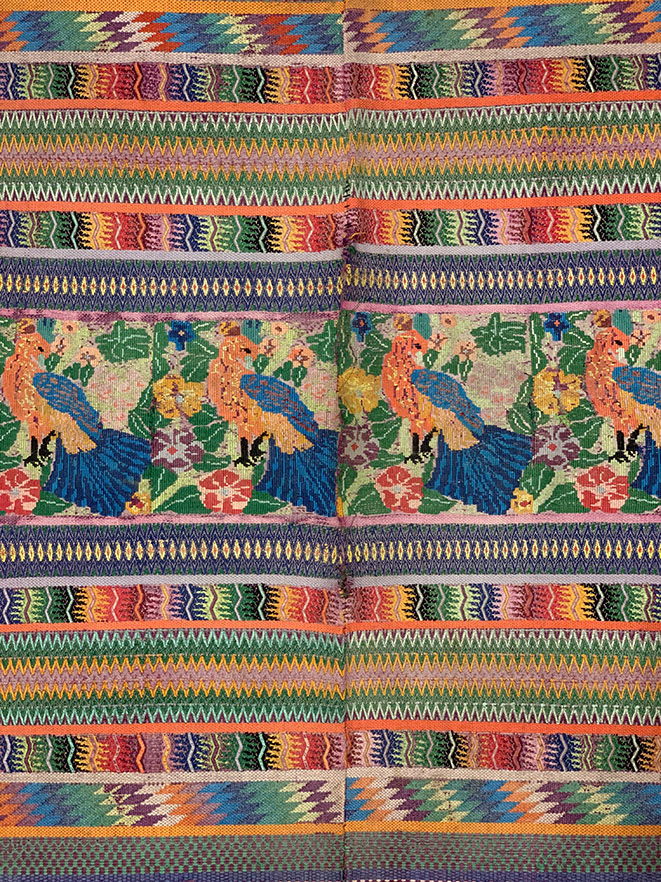BACK TO TOP
TEXTILES
Huipil from San Antonio de Aguas Calientes.
Mayan culture. Kaqchikel ethnic group. Sacatepequez. Guatemala. Early 20th century.
Exceptional collection garment woven with cotton yarn on a backstrap loom, in which you can appreciate the techniques used here since yesteryear -to the admiration and respect of locals and strangers-, with lanes of geometric representations of simple brocade and a central motif with a showy bird that stands out among the foliage. The skill of the weaver has achieved that the two cloths that make up the piece coincide so harmoniously in the sequence of the drawings, that only its interruption to respect the mouth of the huipil bears witness to the seam. Measurements: Length 110 cm / 43.3 in. Width 66 cm / 25.98 in.
The town of San Antonio Aguas Calientes is ten km. from the city of Antigua Guatemala and five from the "Old City", the first capital of the Kingdom of Guatemala, founded in 1527 and baptized as City of Santiago de los Caballeros. When in 1541 it was swept away by a torrent of water that descended furiously and surprisingly down the slopes of the Agua Volcano, its inhabitants moved -and with them the capital- to what is now known as Antigua Guatemala, the second capital, also abandoned when the 1773 earthquake destroyed the magnificent religious temples -including the Cathedral- whose ruins can be appreciated today by the traveler who visits it. Aguas Calientes also had to be moved a few years after its foundation, but due to the repeated siege of locust plagues that starved its inhabitants. They then decided to move the town and change their employer; evidently Saint Bartholomew was not effective against the locust and the Church authorities decided to place it under the patronage of Saint Anthony of Padua. (1) Curiously, it is not its hot springs that have given it prestige, but rather its fabrics, the most finely elaborated in all of Central America. To the classic technique of brocade with a visible weft on only one side of the fabric, they incorporated another, which reproduces the same figure on both sides of the fabric, a perfect double face.
Bibliographic source:
Jorge Lujan Muñoz: General History of Guatemala. Ed Association of Friends of the Country. Guatemala. 1999. Volume III.
Are you interested in selling some works?
Send us an email briefly indicating
which works you intend to put on sale, and we will respond. click here
Subscribe to our newsletter to be updated.
Check our Newsletters
